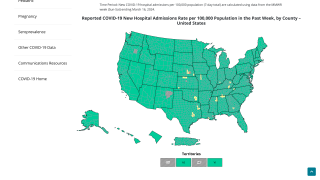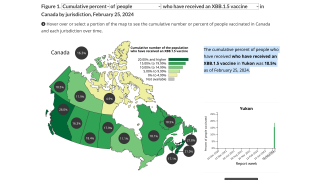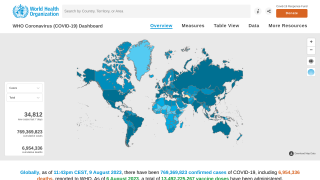Fewest Flu-Related Hospitalizations in Nine Years

The seasonal influenza activity remained lower than usual for this time of year, said the U.S. Centers for Disease Control and Prevention (CDC).
The CDC also reported the number of influenza-associated hospitalizations is lower than normal for this time of year and is ‘comparable to counts last seen during the 2011-12 season.’
And the CDC’s new weekly report (#50) confirmed since September 27, 2020, only (0.2%) of virus species tested were found infected with influenza. Of those found, 56.9 percent were identified as Influenza A.
Additionally, the U.S. Outpatient Influenza-like Illness Surveillance Network (ILINet) monitors outpatient visits for influenza-like illness (ILI), not laboratory-confirmed influenza, says ‘Nationwide, 1.6% of patient visits reported were due to ILI, which is well below the national baseline of 2.6%.’
‘Healthcare-seeking behaviors have changed dramatically during the COVID-19 pandemic. And many people are accessing the healthcare system in alternative settings, which may or may not be captured as a part of ILINet.’
Furthermore, the CDC released some good news from last week.
A total of (1) influenza-associated pediatric death occurring during the 2020-2021 season were reported to the CDC.
This new data compares with the last flu season when the CDC confirmed 195 influenza-associated pediatric deaths.
Separately, the National Center for Health Statistics (NCHS) Mortality Surveillance data available on December 17, 2020, showed 13.3% of the deaths occurring during the week ending December 12, 2020 (week #50), were due to pneumonia, influenza, and COVID-19 (PIC).
This NCHS reported percentage is above the epidemic threshold of 6.6% for week #50.
Among the PIC deaths reported last week, 1,921 had COVID-19 listed as an underlying or contributing cause of death on the death certificate. And only (2) certificates recorded influenza, indicating that the current increase in PIC mortality is due primarily to COVID-19 and not influenza.
Influenza viruses change from year to year, so influenza vaccines must be updated annually to include the viruses that will most likely circulate in the upcoming season, says the CDC.
As of December 11, 2020, the newest data indicates 189.4 million flu shots were distributed in the USA. Currently, influenza vaccine manufacturers have not reported any significant national flu vaccine supply or distribution delays this season.
Approximately 99 percent of the projected vaccine supply produced for the 2020-2021 flu season will be quadrivalent (4-component) vaccines. The only trivalent vaccine available for the 2020-2020 flu season will be the trivalent formulation of the adjuvanted flu vaccine licensed for seniors 65 and older.
All influenza vaccines contain an antigen derived from the same influenza viruses. The one difference is that trivalent vaccines have three different antigens and quadrivalent vaccines have four other antigens (the same three that are in the trivalent vaccines, plus one more).
However, aside from the antigen composition, different influenza vaccines are manufactured differently, and various preparations have other indications as licensed by the FDA.
In particular, each is licensed for a specific age range. This means everyone should receive a flu shot that is appropriate for their age.
Additionally, the nasal spray flu vaccine is not recommended for use for certain sub-populations.
To review the latest influenza news, please visit PrecisionVaccinations.com/flu.
PrecisionVaccinations publishes research-based vaccine news.
Our Trust Standards: Medical Advisory Committee

























